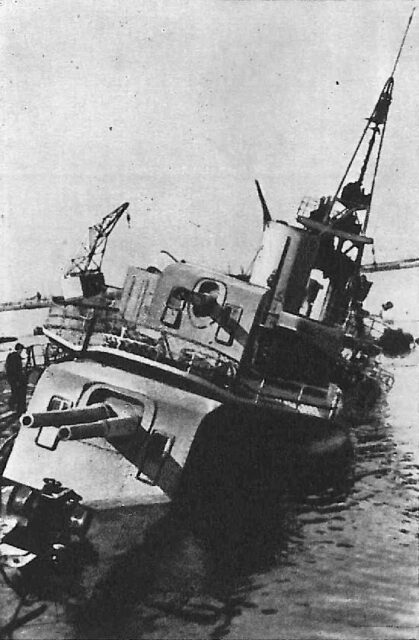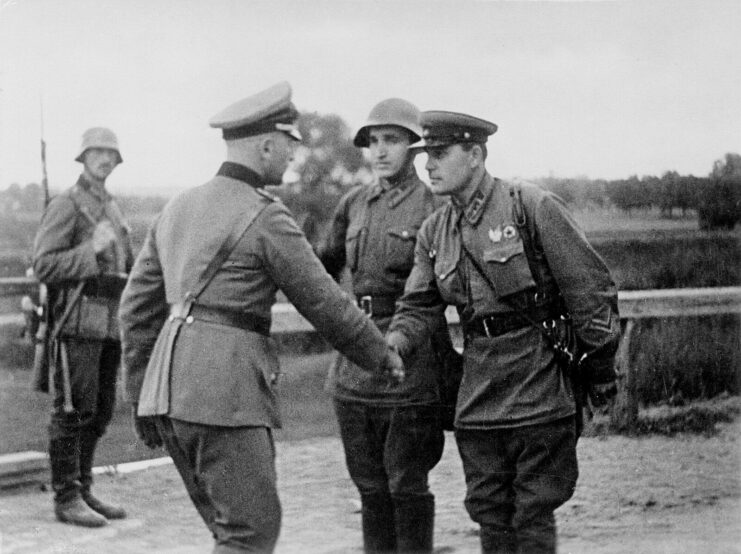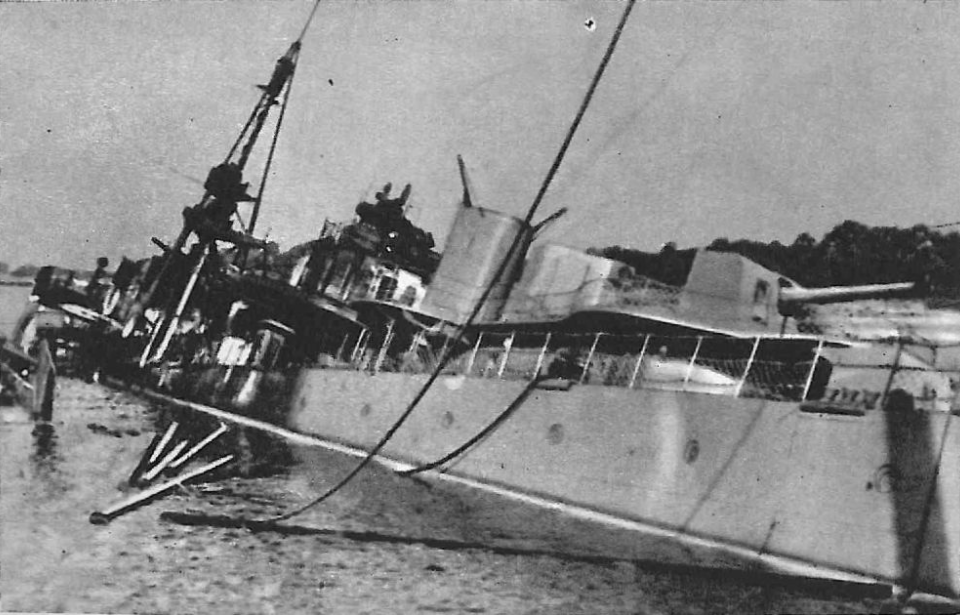While many focus on the ground invasion when it comes to Germany’s offensive against Poland in September 1939, it’s important to take note of what was happening both on the water and in the air. The Kriegsmarine and Luftwaffe played major roles in securing German victories in the early days of the fighting, with a battleship even firing the first shots of the Second World War.
In this article, we examine the use of naval forces during the early stages of the invasion, from the Poles defending their coastline to the Germans using their more-advanced vessels to clear a way in the Baltic.
Lead-up to the German invasion of Poland

In the years leading up to the German invasion of Poland, Europe bore witness to the aggressive expansionist and foreign policies of Germany. Spearheaded by the Führer and the National Socialist German Workers’ Party, it had already led to the reoccupation of Rhineland in 1936, followed by the annexation of Austria in ’38 and that of the Sudetenland from Czechoslovakia in ’39. These were part of the broader strategy to establish German dominance in Europe.
The Munich Agreement, signed in 1938, allowed Germany to annex part of Czechoslovakia and was a precursor to the invasion of Poland. Seen as an act of appeasement by Britain and France, it emboldened the Führer to pursue further territorial expansion. By the time Germany had set its sights on Poland, the stage was set for a major confrontation, and the Molotov-Ribbentrop Pact, a non-aggression treaty between the former and the Soviet Union, only further isolated the Eastern European nation.
On September 1, 1939, Germany launched its blitzkrieg against Poland, marking the beginning of World War II. The invasion was swift and brutal, utilizing a combination of ground troops, air assaults and naval forces. The Kriegsmarine played a crucial role in the invasion, particularly in the Baltic Sea, where its sailors sought to control vital maritime routes and ports.
‘Peking, Peking, Peking’

The Peking Plan was an operation executed by the Polish Navy in the days before the German invasion. As tensions in the region began to escalate, the government decided to evacuate its most modern naval destroyers to the United Kingdom, to prevent their capture or destruction. The plan was conceived out of necessity, as the Polish Navy was greatly outmatched by the Kriegsmarine.
On August 29, 1939, the signal “Peking, Peking, Peking” was sent out, initiating the evacuation. Three Polish destroyers – ORP Burza, Błyskawica and Grom – set sail from the Baltic Sea, under the command of Komandor porucznik Roman Stankiewicz.
The journey was fraught with danger, as the ships had to navigate waters patroled by German naval and air forces. Despite these challenges, and with the assistant of the Royal Navy, they successfully reached Edinburgh on the evening of September 1, the day the German invasion began.
What role did the Kriegsmarine play in the invasion of Poland?

The Kriegsmarine played a role in the German invasion of Poland, focusing on securing control of the Baltic Sea and supporting ground operations along the coast. The primary objectives were to block ports, disrupt supply lines and provide artillery support for the advancing Wehrmacht forces. The naval operations were coordinated with the Luftwaffe to maximize their effectiveness.
One of the key missions of the Kriegsmarine was to neutralize the Polish naval forces and secure important maritime routes. The service deployed battleships, cruisers, destroyers and U-boats to achieve this. The swift and overwhelming naval assault helped to cripple the Polish Navy and ensured German supply lines remained open.
September 1-7, 1939: Battle of Westerplatte

The Battle of Westerplatte was the first engagement of the German invasion of Poland. Located on the Westerplatte Peninsula, in the Free City of Danzig (modern-day Gdańsk), the Polish Military Transit Depot was a key strategic point. The garrison, commanded by Maj. Henryk Sucharski, was tasked with holding out against the German assault for 12 hours, but they managed to resist for seven days.
The battle began on September 1, 1939, with a bombardment by the German battleship SMS Schleswig-Holstein. Despite being heavily outnumbered and outgunned, the Polish defenders put up a fierce resistance. The German forces, including soldiers and the Danzig police, launched several assaults on the depot, but were repelled each time.
The Polish defenders made use of a network of trenches, bunkers and fortified positions to hold their ground. Their prolonged defense of Westerplatte tied down significant German resources and became a symbol of Polish courage and determination. On September 7, after exhausting their supplies and suffering heavy casualties, the garrison finally surrendered.
September 1, 1939: Battle of Danzig Bay

The Battle of Danzig Bay took place on September 1, 1939, and was a key naval engagement during the early phases of the German invasion of Poland. The Polish Navy was tasked with disrupting German naval movements and protecting the coast from any sort of amphibious landing, leading to a series of skirmishes between its sailors and the Luftwaffe.
The Polish forces – consisting of the minelayer ORP Gryf, several smaller minesweepers and two gunboats – faced overwhelming odds. Despite their valiant efforts, their ships were heavily damaged by German Junkers Ju 87B Stukas. One of the ones to suffer damage was Gryf, the result of German machine gun fire, leading to the death of commanding officer Cmdr. Stefan Kwiatkowski and 29 other casualties.
The battle resulted in the cancellation of Operation Rurka, a planned Polish minelaying operation aimed at blocking German naval access to Danzig Bay. While unable to achieve its objectives, the engagement demonstrated the Poles’ determination to resist the German invasion.
What happened in the weeks after the initial invasion?

Within weeks, Polish defenses were overwhelmed by the invading German forces. However, the invasion wasn’t solely a German effort; the Soviet Union also played a significant role. On September 17, 1939, the Red Army invaded the eastern portion of the country, further sealing Poland’s fate. The enemy forces quickly overran the nation’s defenses, leading to its eventual occupation and division.
More from us: The Wola Massacre Was One of the Most Horrific Episodes of the Warsaw Uprising
Want War History Online‘s content sent directly to your inbox? Sign up for our newsletter here!
In the years following the invasion, Poles were subjected to cruel treatment by their occupiers. In the German-occupied zone, the political elite, academics and anyone viewed as a threat to the regime were executed, while Jewish residents were forced to live in ghettos, before being sent to concentration camps. Those under Soviet control experienced similar cruelty. Executions happened on a regular basis, and Polish culture was suppressed, in favor of the country’s “Sovietization.”
